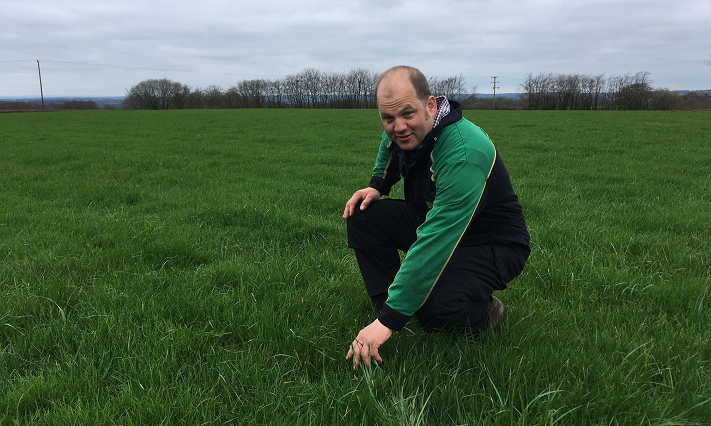Successful over-seeding
White clover and festulolium have boosted yields from permanent pasture
Last summer, sheep farmer Tim Heywood at Highfield Farm, Rackenford near Tiverton in Devon, over-seeded an old 2.8ha field of permanent pasture with white clover and Lofa festulolium. Conditions were tough in the summer drought but the results have been impressive. The field lies at 274 metres above sea level, half way between Dartmoor and Exmoor.
“We have been on the farm for three years and have improved the grassland for our flying flock of 400 ewe lambs, which we run for 11 months and sell as shearlings in the autumn,” explains Mr. Heywood.
“I work closely with John Harris of Oliver Seeds, who soil tested all the fields and dug inspection pits to check for compaction. The soil had low pH of 5 and we applied 2.5t of lime across the whole farm and a further tonne each year since then.
“This field had a lot of weeds, including creeping thistle, buttercups and dandelions. We sprayed with the broad-spectrum herbicide Forefront T in 2017 and grazed it for the rest of the season. Last summer we decided to add a mixture of 3.6kg/ha of Buddy white clover and 22kg/ha of Lofa.”
Mr. Heywood followed Mr. Harris’ guidance for over-seeding precisely. The sheep grazed the pasture hard before harrowing with a Köckerling Grasmaster in two directions to pull out all the dead thatch.

The seed was added into the tined seeder and broadcast in two directions before being rolled with a heavy set of 6-metre wide Cambridge rollers. Mr. Heywood drove slowly in both directions, allowing the sharp edges to push the seed into the ground. The sheep stayed in the field until the clover started to germinate to keep the original sward tight to allow light to the seedlings.
“I had reservations about seeding because it was so dry,” admits Mr. Heywood. “But the clover came through strongly across the whole field – it was incredible to see.
“I took a cut of haylage which was made into large square bales in August and the sheep grazed it into the autumn.
“This spring it is easy to spot the young Lofa coming through and I am expecting the clover to get going once the temperatures rise. This has been a cost-effective way to improve this field and I am delighted with the results.”
This case study was first published in Farmers Guardian, March 29, 2019
